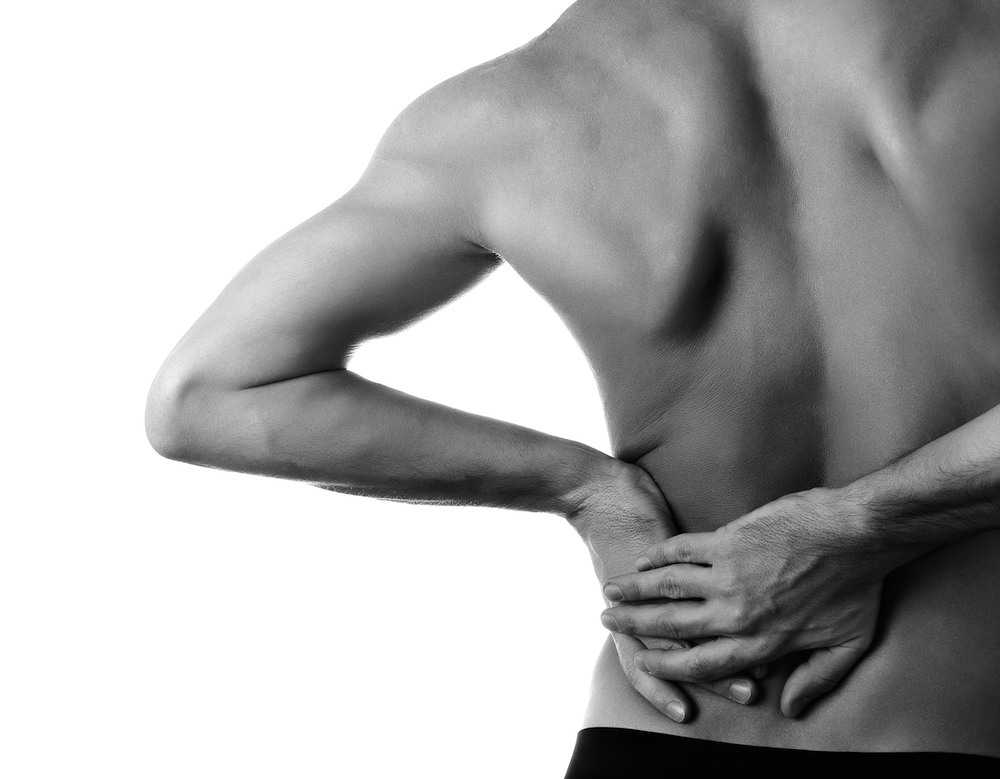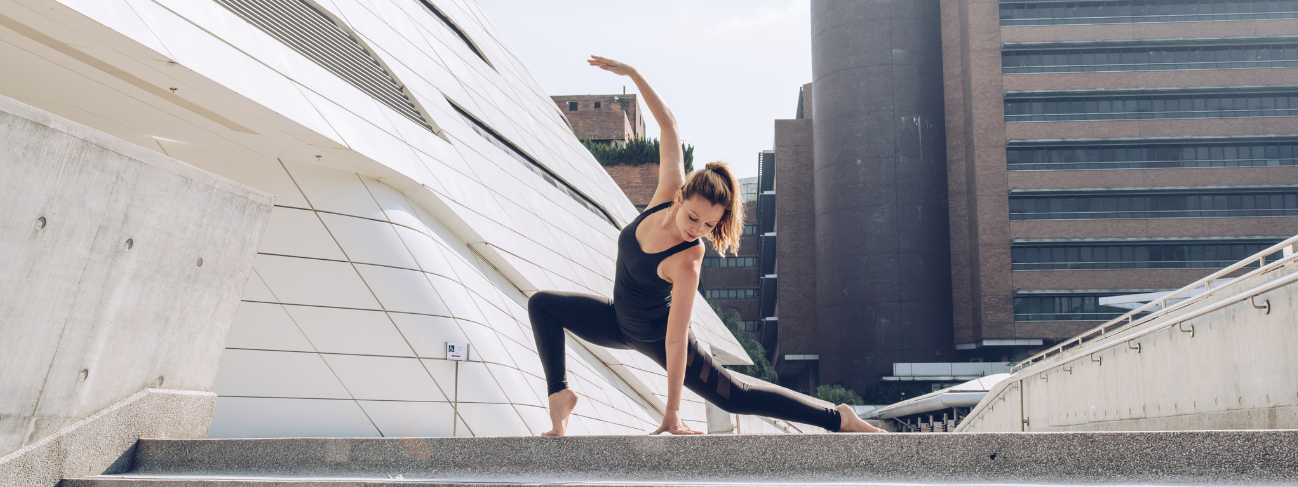
06 Oct Say Goodbye to Back Pain

With Donna Gee, registered physical therapist and clinical Pilates instructor
Back pain is one of the most pervasive ailments of our modern society. When you suffer from back pain, it not only limits what you can achieve physically, but it also impacts your mental and emotional states and overall feeling of happiness and wellbeing. In fact, it affects every waking, and often some sleeping, moments. Pilates is an ideal practice for those with back pain, helping address core weakness, while lengthening and strengthening vital muscles and helping you build body awareness in order to address the negative habits or compensations that are causing it. Donna Gee, registered physiotherapist and clinical Pilates instructor explains.
Why do we have back pain?
Most back pain is a result of cumulative effects of months or even years of poor posture, faulty body mechanics, stressful living and working habits, loss of flexibility and strength, and general lack of physical fitness. The spine starts to degenerate at the stress points and disc integrity may also start to deteriorate, resulting in a loss of disc space, a bulge or even a herniation.
The body naturally protects itself by producing inflammation to stop the repetitive movement that may be causing the irritation, but the inflammation can compress nerves and limit mobility at the joints, which then results in muscle tightness and weakness. The snowball effect of low back pain (LBP) can then keep getting worse until treated.
Other causes of back pain are lateral curvature of the spine called scoliosis, which often leads to neck, shoulder, hip and back pain.
LBP sometimes accompanies pregnancy, obesity or after an accident or fall.
An issue on the rise
To hear a person under the age of 18 complain of LBP is not, or should not be, “normal”. Low back pain is however definitely on the rise, largely due to the fact that people today spend more time sitting, less time moving and common causes include stooped posture and inactivity.
The use of mobile phones and laptops for prolonged periods has resulted in poor body mechanics. Just have a look around you; people sit stooped or stand slouched, peering at their mobile phones. Office workers now spend far more time sitting at their computers, hunched over the screen, compared with typewriter days. Manual labour jobs have been replaced by machinery, only requiring someone to sit and operate it. Remote controls eliminate the need to get up to change TV channels unlike when changing the radio station or a vinyl record.
What to do
There are multiple ways to alleviate back pain, depending on the cause and how long it has been present. It is common for a doctor to prescribe medication, anti-inflammatory cream, rest, use of ice or heat, and give a referral for physiotherapy. In severe pain situations, wearing a lumbar corset as temporary support until treatment commences is a good idea.
As early as possible it is important to improve your posture, instill better life habits and use correct body mechanics when lifting, all the while activating your pelvic stabilizers.
Chronic back pain
When a pain has been present for three months or more, it is considered to be chronic. Chronic back pain usually starts as a low grade irritation, not enough to stop normal day to day activities but still there as a dull, nagging sensation. Over time it gets worse if not treated, and eventually the pain increases and starts to affect normal day-to-day function. Chronic pain may take longer to alleviate due to the fact that it has been present longer and the cause of the pain may not be so straightforward as with the acute episode.
Acute Back Pain
The methods used for acute back pain can be applied as well to a chronic situation.
These are only a few of the various treatments that will help alleviate the pain: mobilizations of the spine and pelvis, stretching and strengthening of muscles through exercise, manual therapy, electrical modalities, acupuncture, massage, fascial releasing, mechanical traction, manual traction, diet and lifestyle changes.
Ultimately, the goal in both acute and chronic is to reduce swelling, reduce muscle spasm, restore normal mobility at the joints and increase the stability of the whole spine and pelvis. It is important to look at whole body to assess why back pain is present. Ultimately strengthening the muscles that stabilize the lumbar pelvic structure is the best place to start.
Pilates is key
Pilates is one of the recommended rehab measures for back pain because its basic principle of ‘strengthen and lengthen’, combined with breath work, postural alignment and control with co-ordination, all lead to a healthy back.
Pilates exercises focus on strengthening the deep stabilizing muscles of the pelvis, hips and shoulder girdle, which result in overall improved strength, increased flexibility through stretching the tight muscles that are restricting normal movement and thus an overall increased stability of the whole spine. A person’s body will now move more from its central core powerhouse with ease and without pain.
I strongly recommend that anyone with back pain start with one-on-one sessions with a Pilates instructor before moving on to a traditional Pilates class.
With back pain that has a more complex history, and/or a high level of immobility because of the back pain, I would suggest the sessions be with either a Pilates instructor who has training or extensive experience with rehab or clinical Pilates, or a physiotherapist with Pilates training.
Is yoga good for back pain?
Many aspects of yoga have shown to be useful in gaining strength, flexibility and endurance, which is the basic goal for rehabilitating someone with back pain.
My preference having done both yoga and Pilates, and having injured my back several times, is that if you have back pain, focus first on getting the stability back into your pelvis and shoulder girdle through Pilates. Once your pain symptoms have subsided and your back is strong, and you have a good awareness of postural alignment and how to connect to your core, then attend a yoga class.
Other practices that help with back pain
It is important to include some type of cardio activity because the increased blood flow helps to reduced swelling, relaxes muscles, creates movement at the joints and decreases stiffness, so ultimately also helps in reducing pain.
Walking and swimming are good cardio choices to start with. As pain subsides and stability improves, one can consider progressing to other cardio activities, keeping in mind the general condition of the spine. A degenerated spine will not tolerate high impact exercises.
Sitting on a fit ball challenges the stabilizing muscles.
Dancing in which you must keep good posture, or dancing which is free flowing, are both good.
Tai chi is ideal because the movements are slow and controlled, which requires balance and focus.
Are these solutions that can cure back pain?
I don’t like to use the word ‘cure’, however through continuous exercise management, a healthy lifestyle and good posture, people can certainly appear to be ‘cured’ in that they may never have back pain ever again. Back pain tends to return if any one of the causes mentioned above become part of your lifestyle again.
Lower Back workshop
Join Donna Gee’s workshop Strengthening + Stretching for the Lower Back which runs on 5th November, 2.30pm to 4pm at Flex Studio Central. You’ll learn how to alleviate the stress on your back, strengthen your stabilizers and stretch the surrounding muscles for instant relief.
About Donna Gee
Donna is a registered physiotherapist who focuses on core stability, postural alignment, pelvic instability and post-natal rehabilitation. She works at Flex Studios in Central and One Island South as a physical therapist and has studied eastern practices like Traditional Chinese Medicine, Acupuncture, Chi Gong, Reiki and more.


